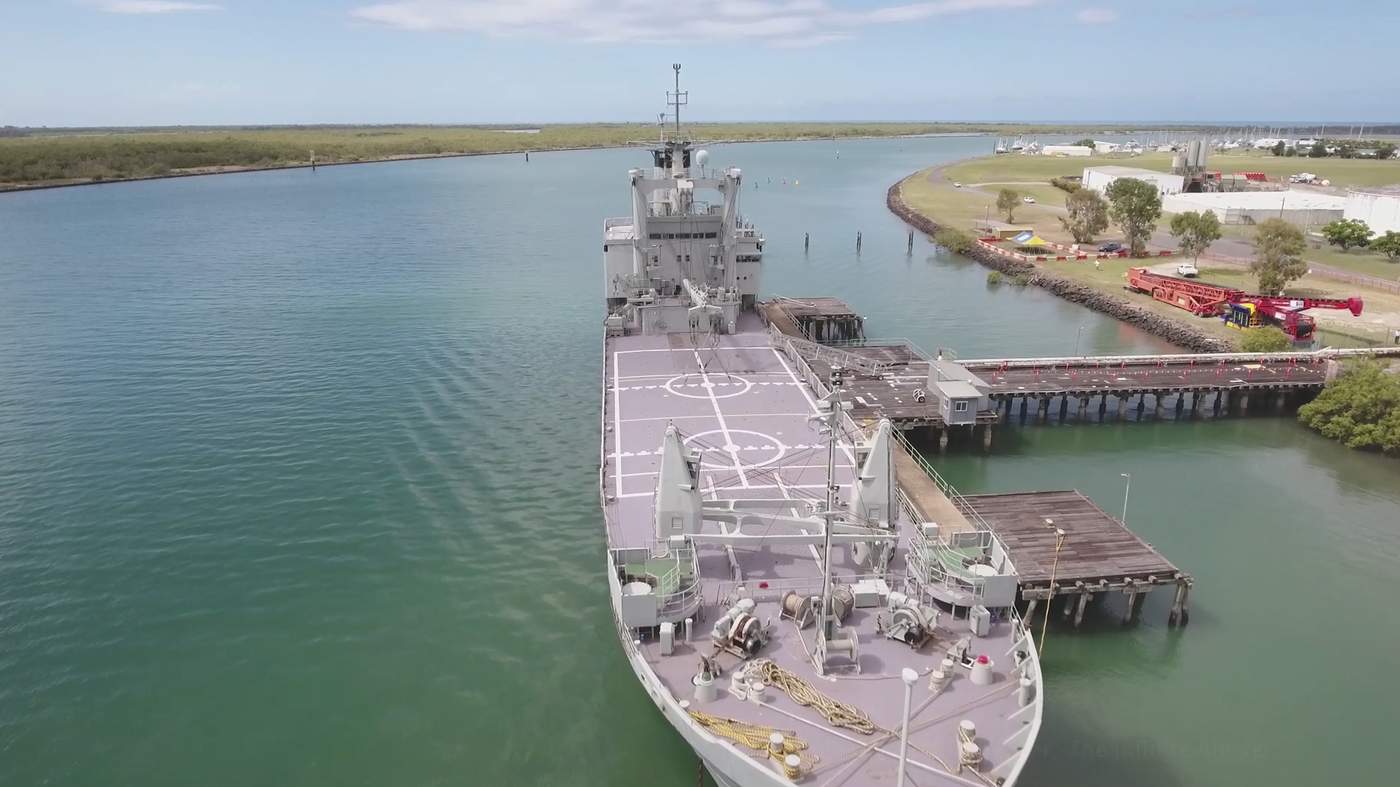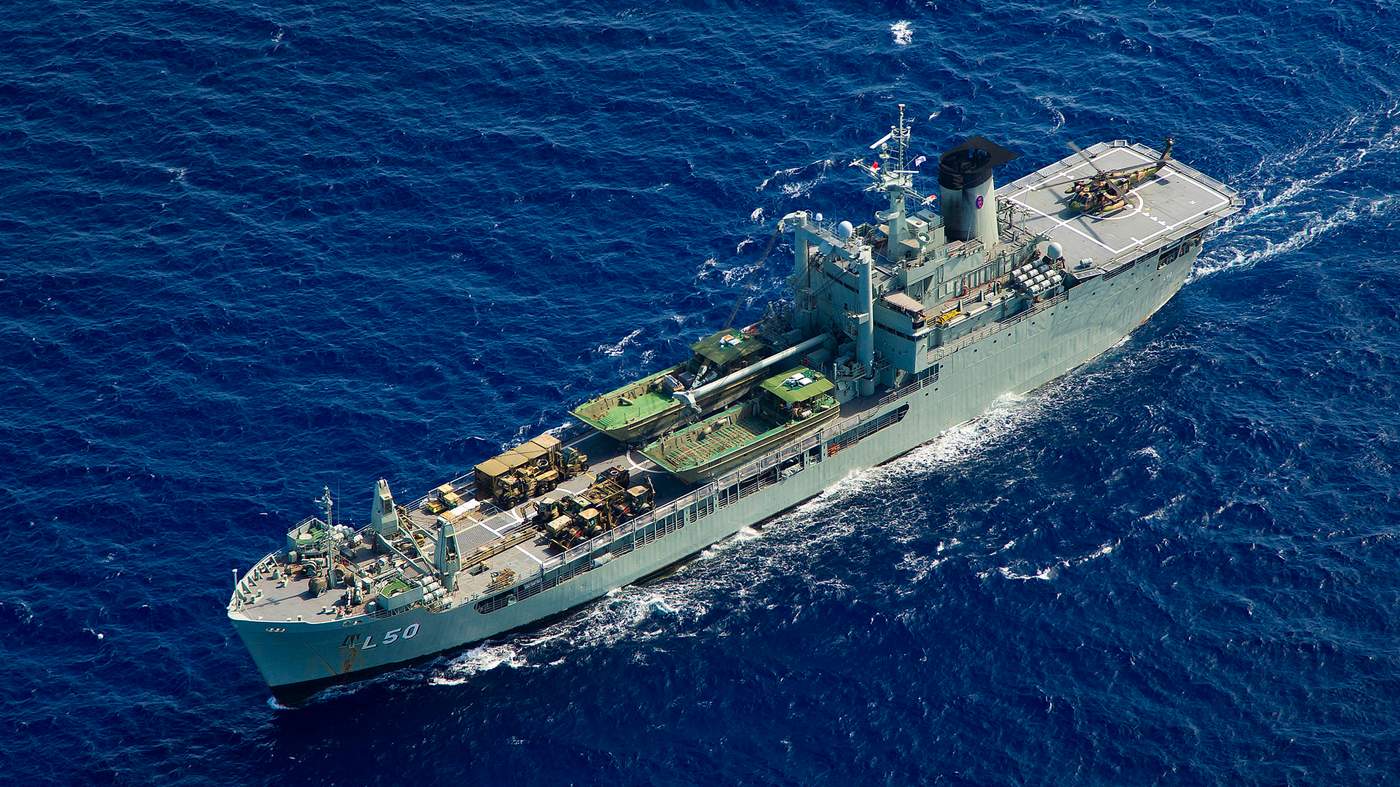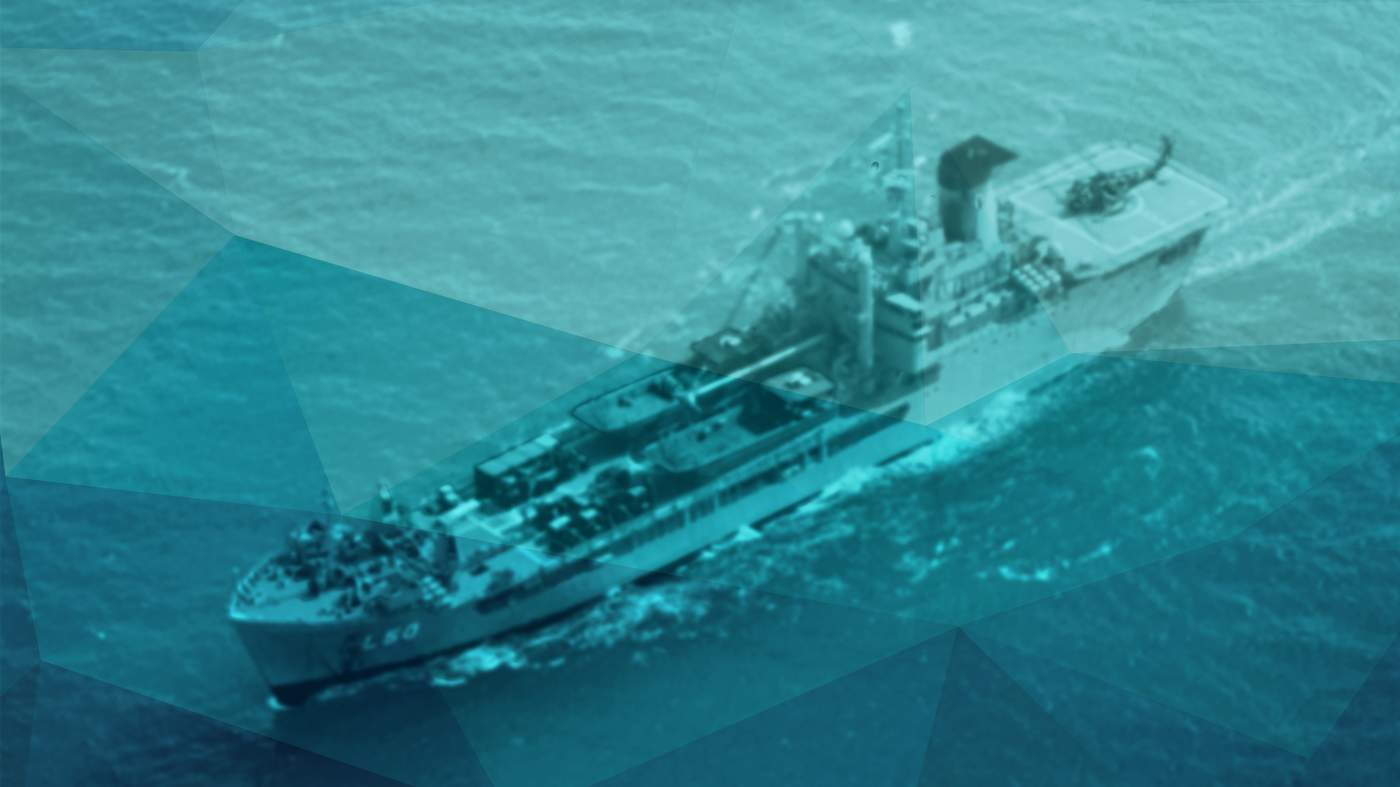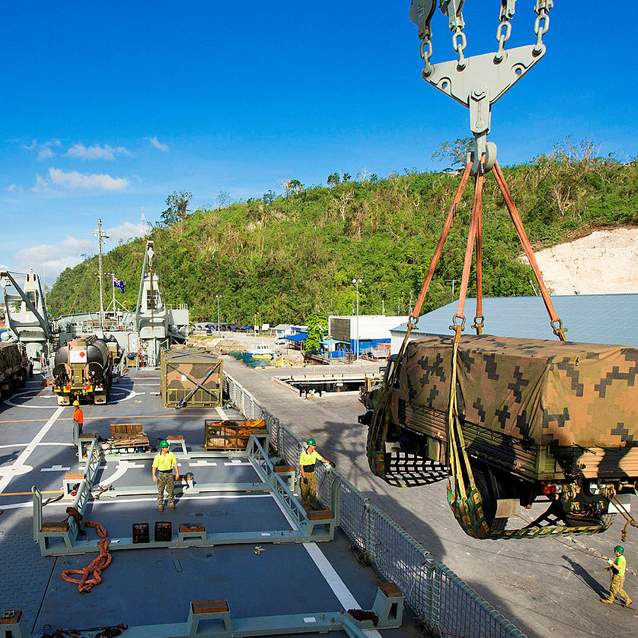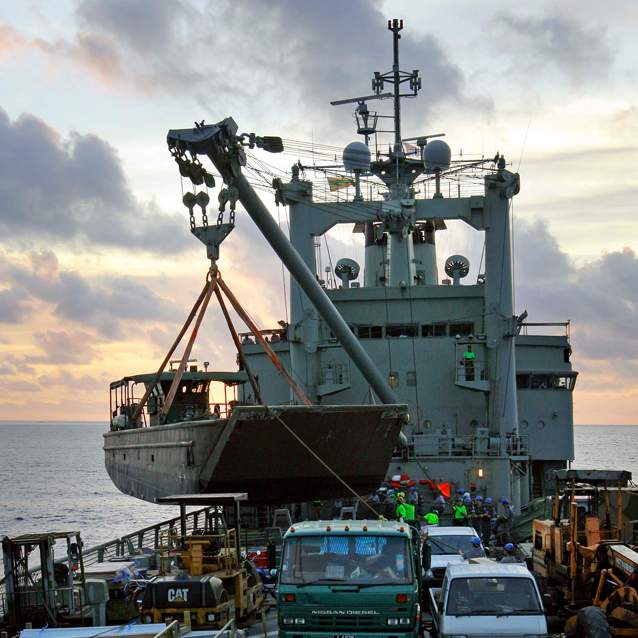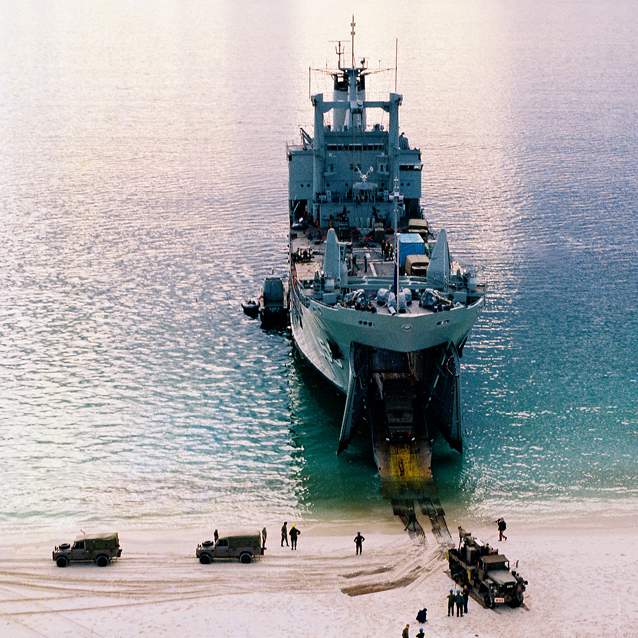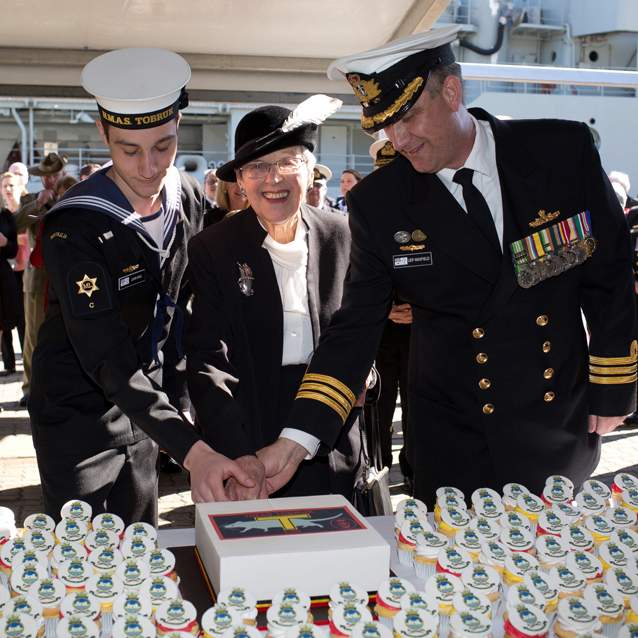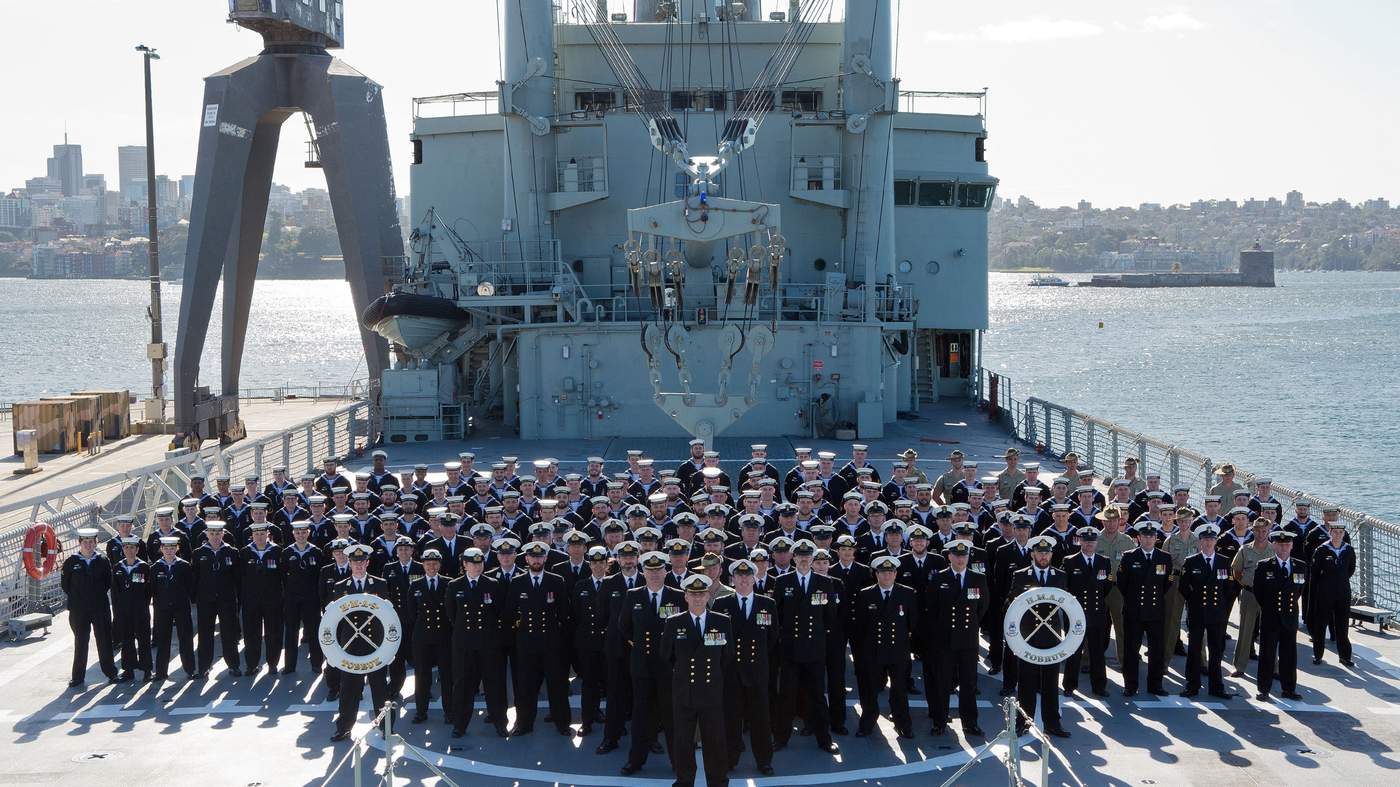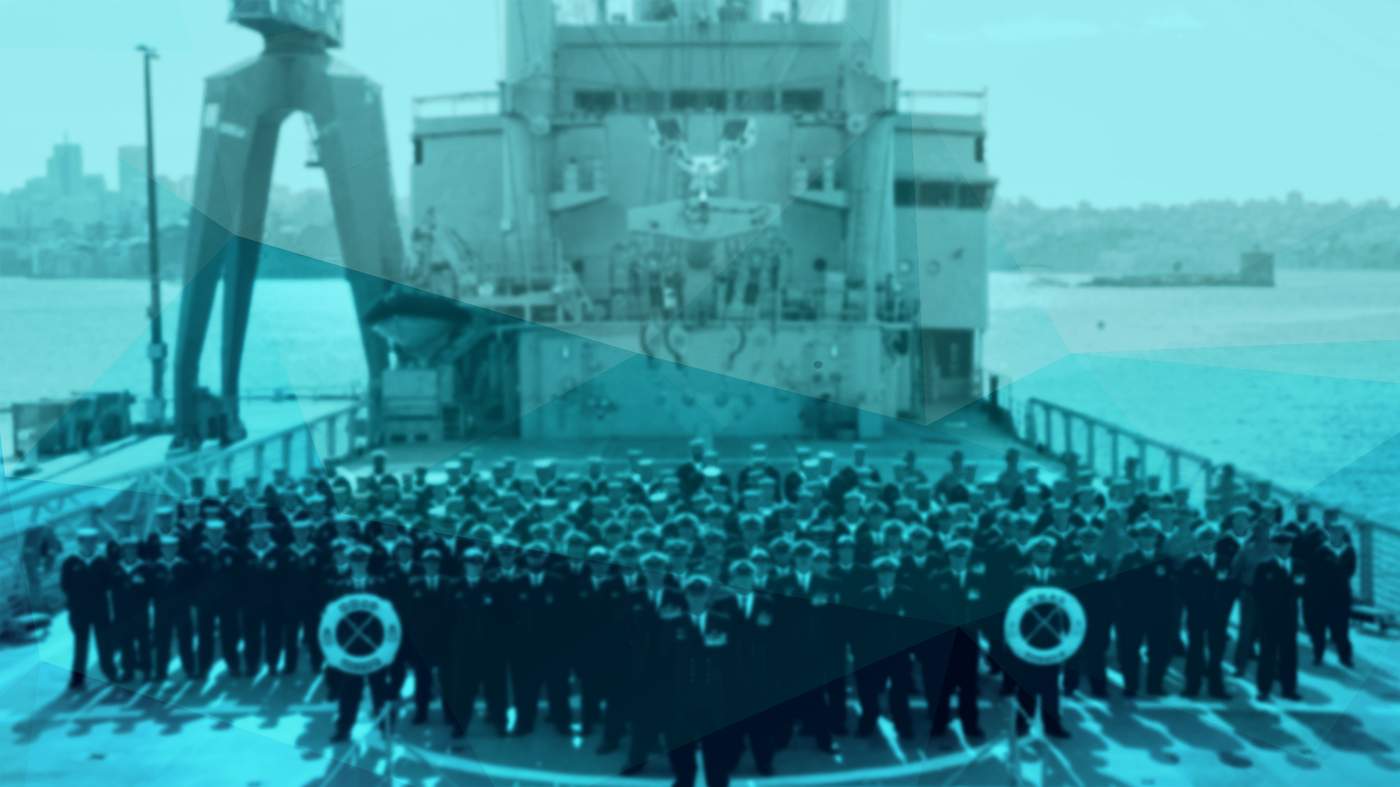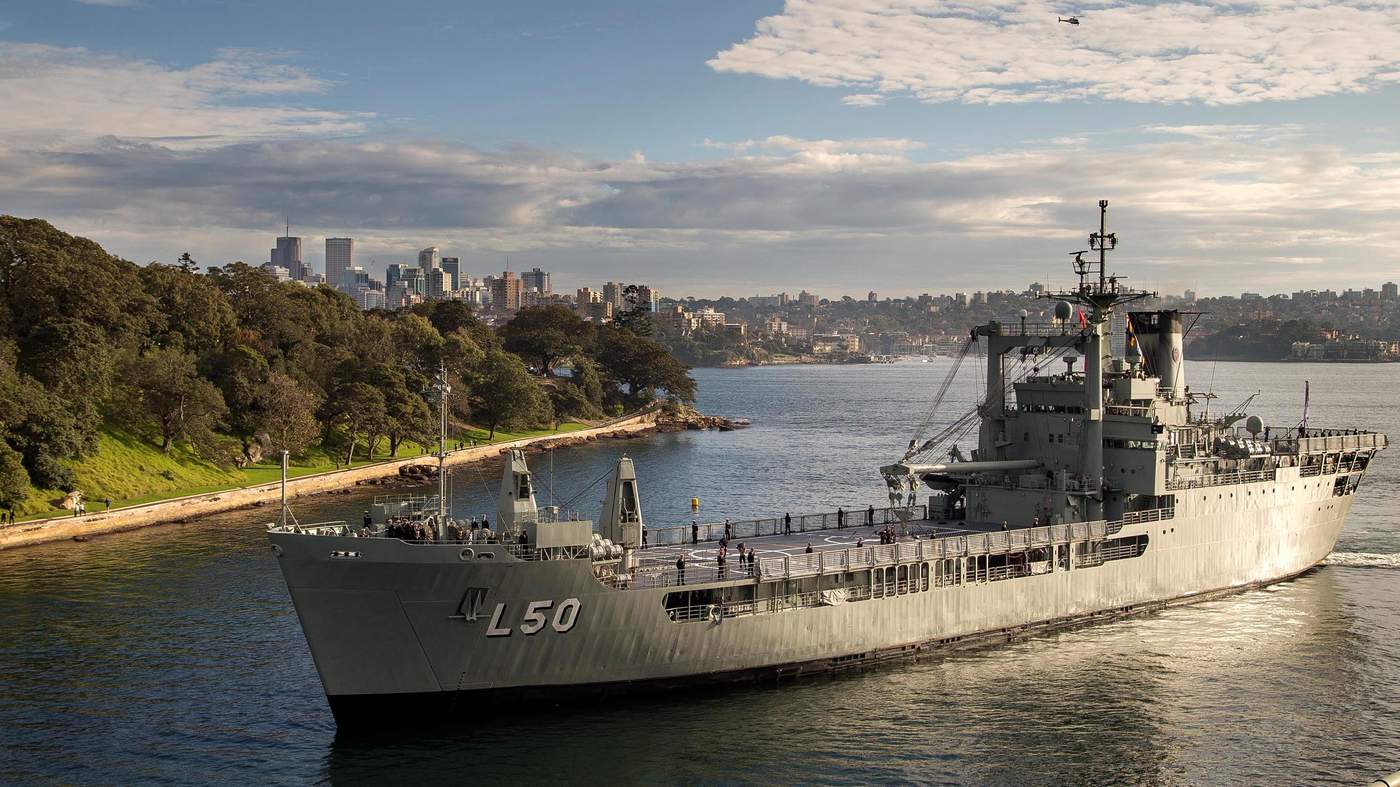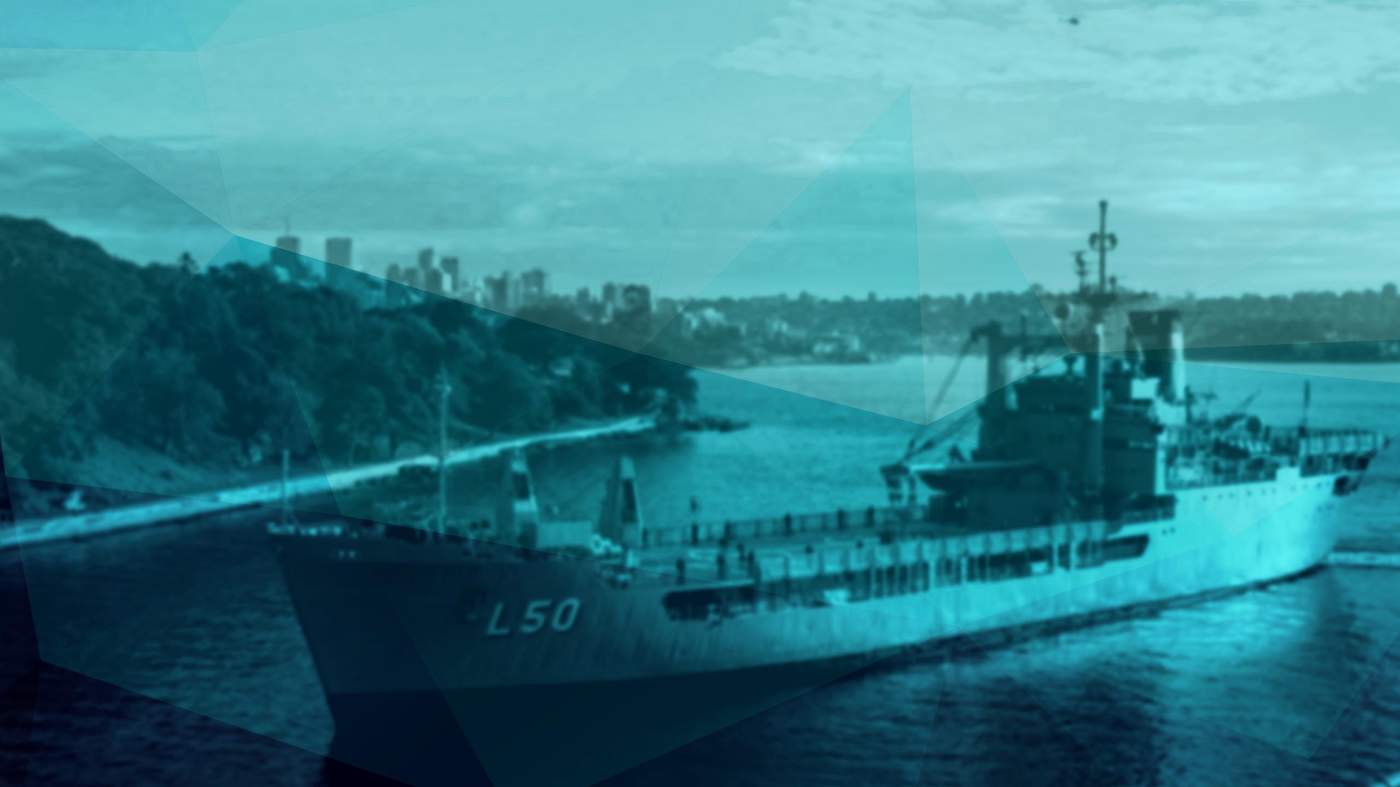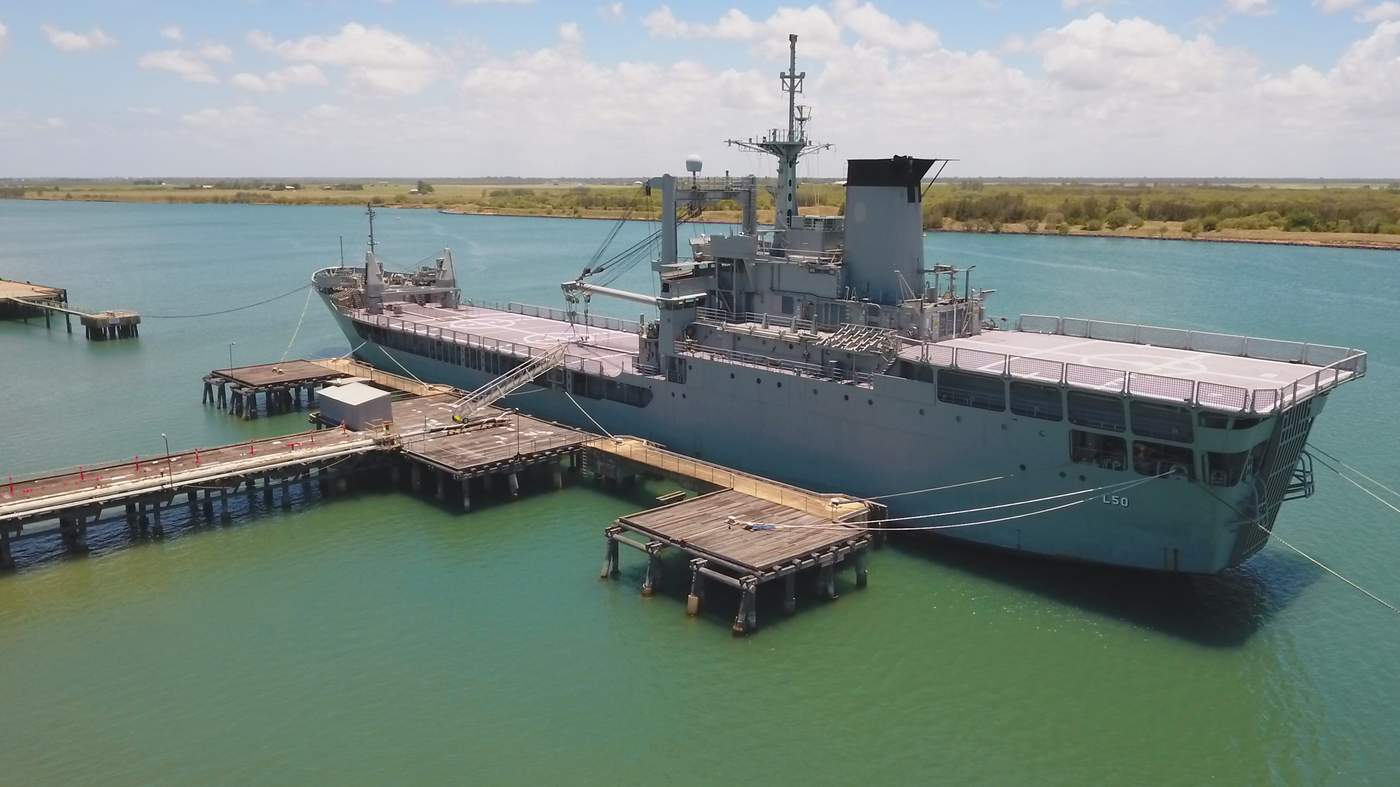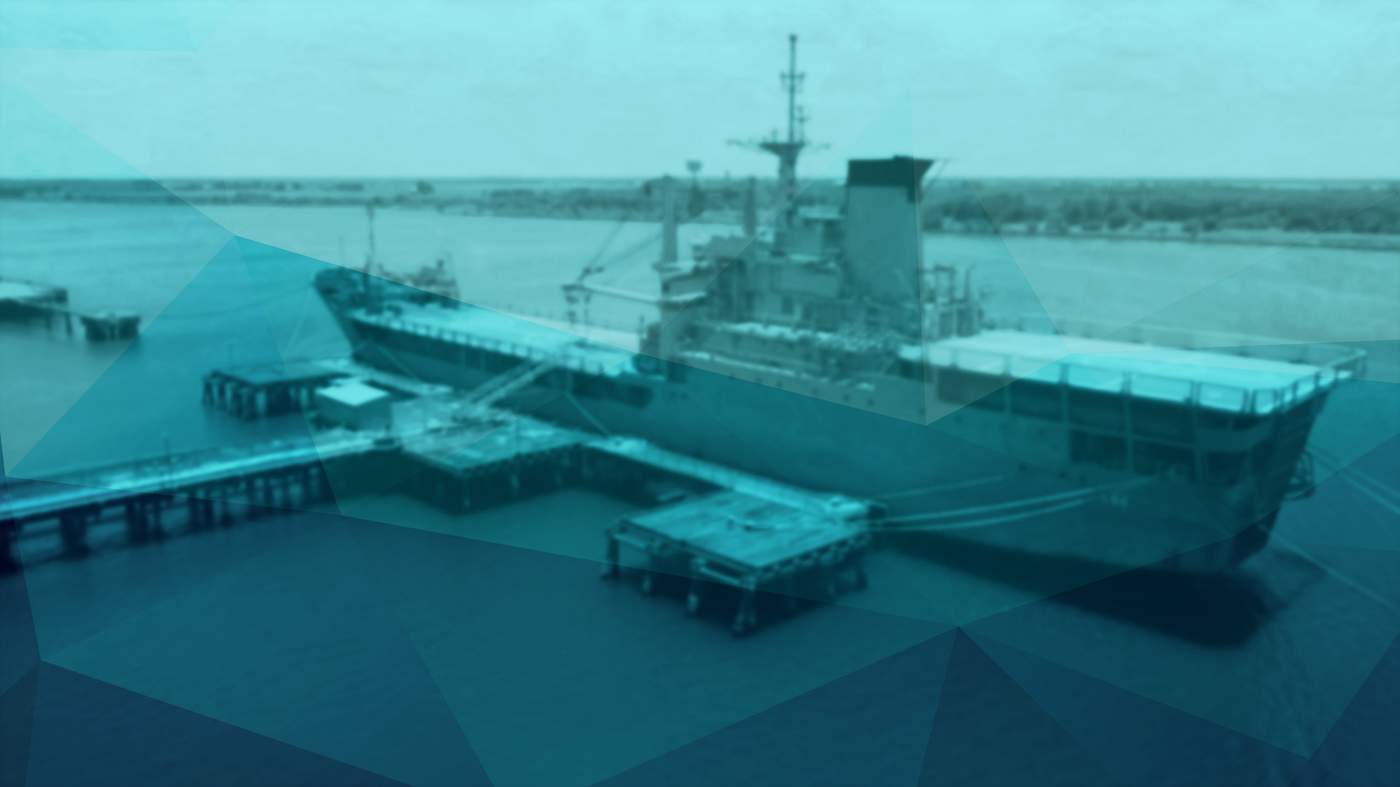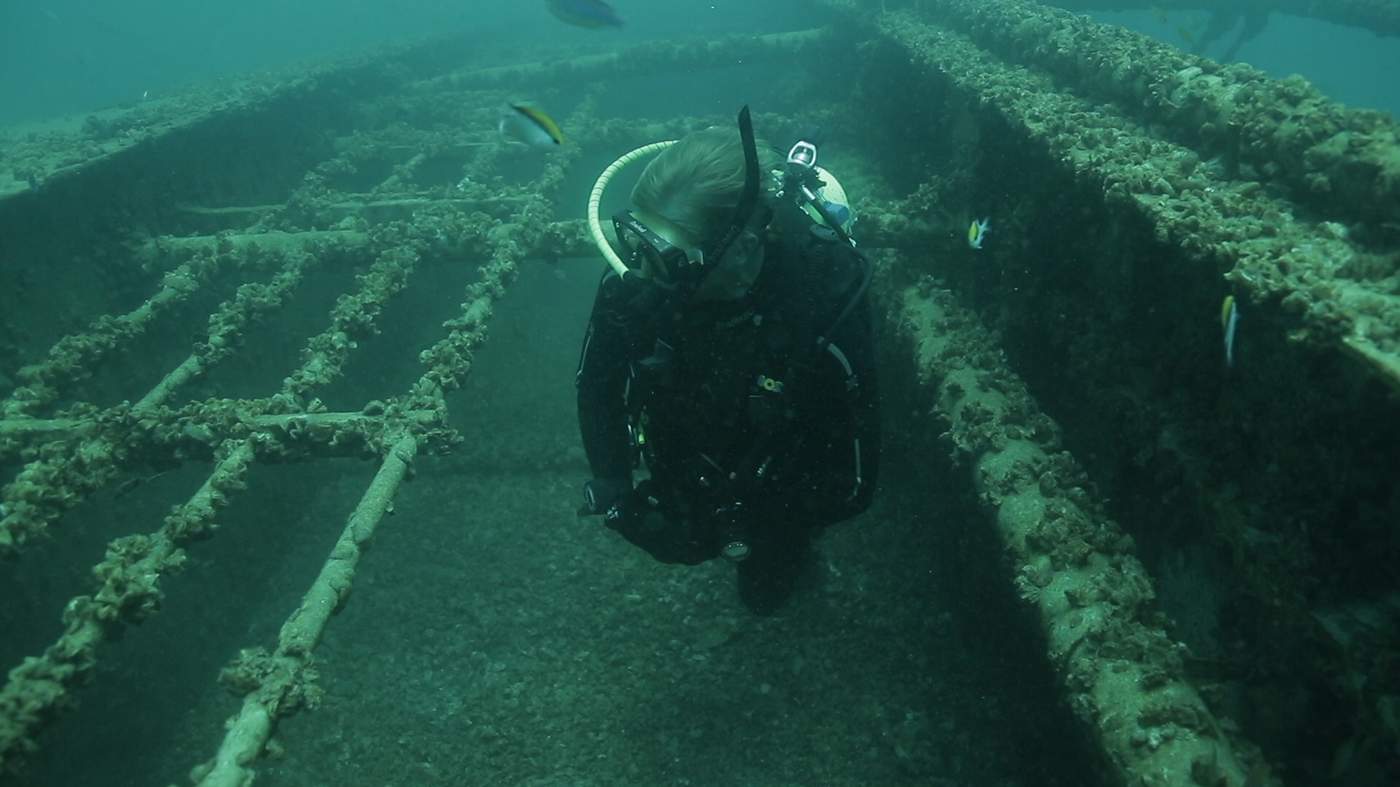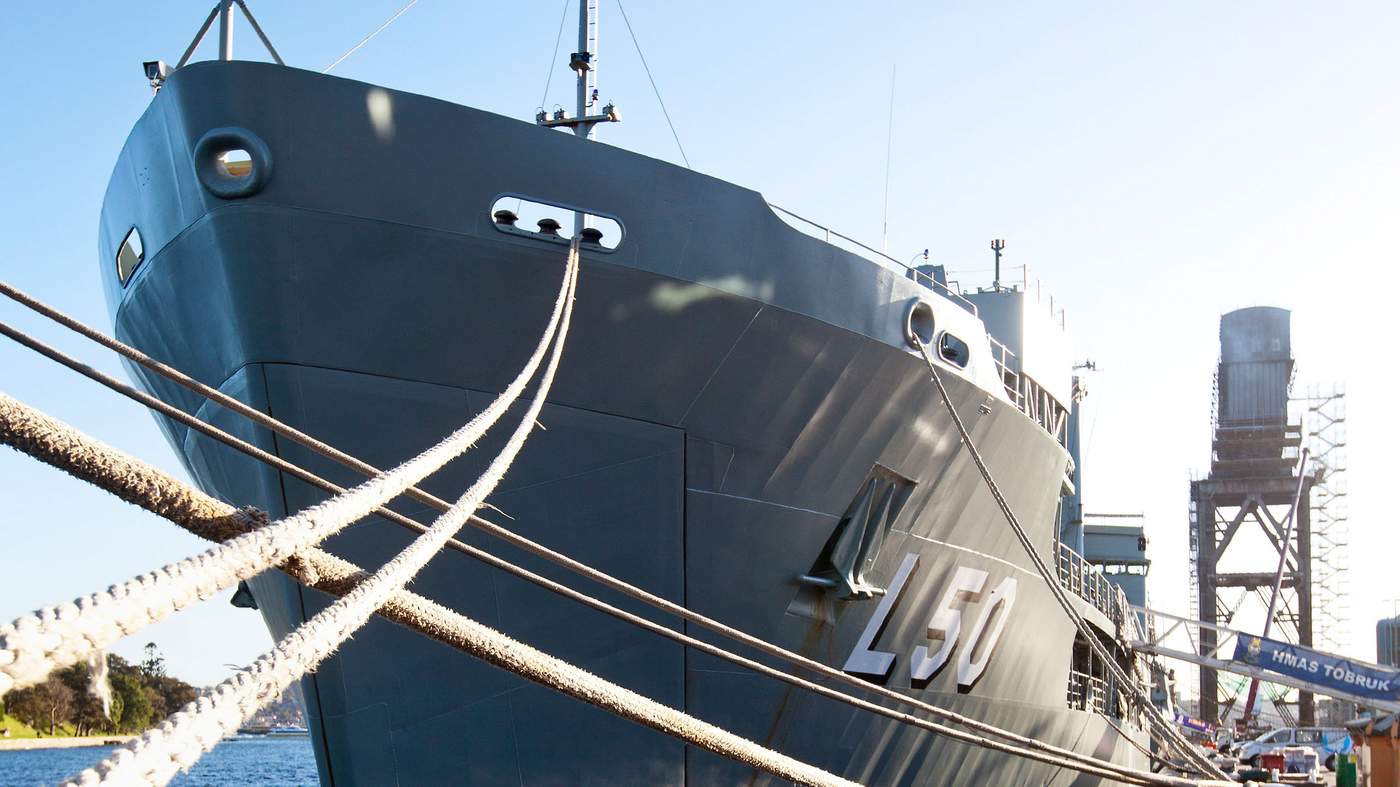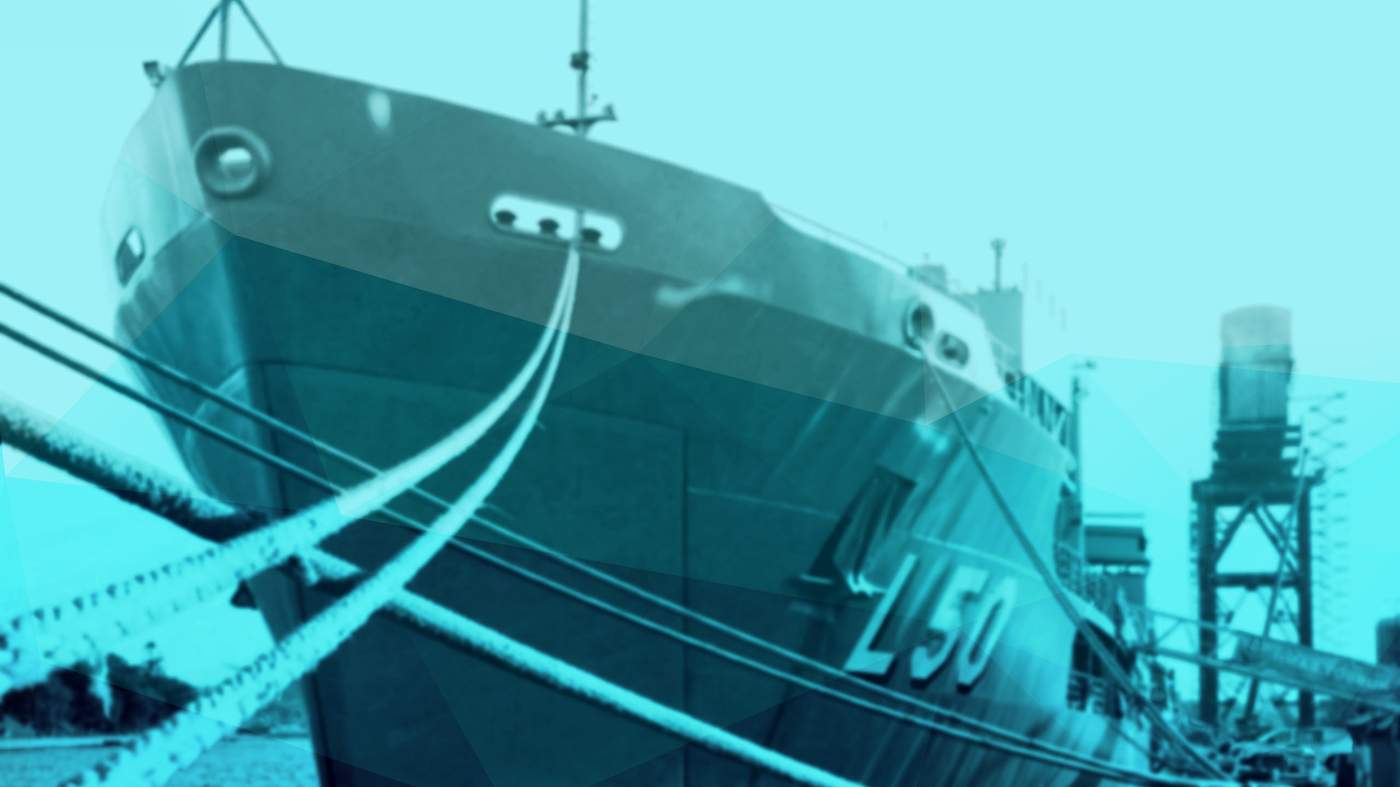The scuttling of the ex-HMAS Tobruk is a project in partnership between the Queensland Government, Bundaberg and Fraser Coast Regional Councils to create an artificial reef and world-class dive site in the Hervey Bay region.
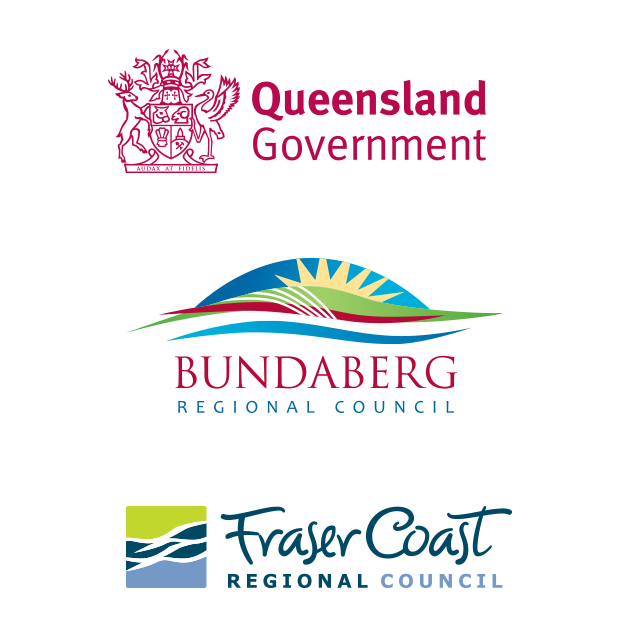
Ex-HMAS Tobruk was launched on 1 March 1980 by Lady Anna Cowan, as the Royal Australian Navy’s first purpose built amphibious heavy lift ship.
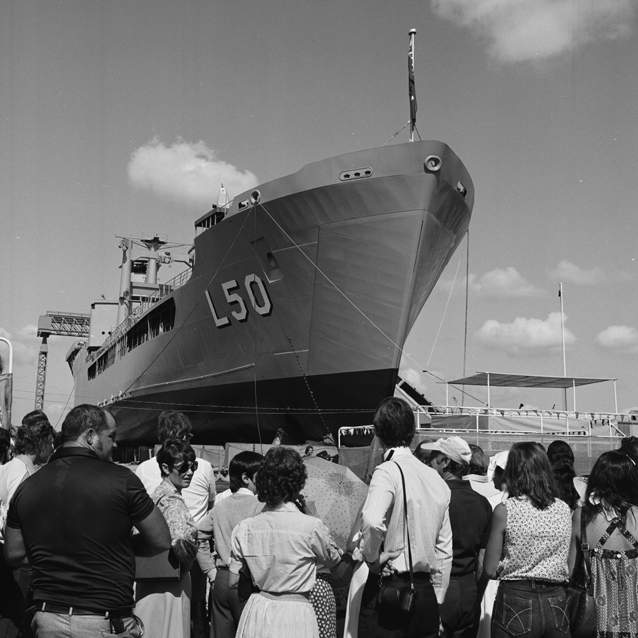
Launch of the Tobruk at Carrington slipways, 1980.
Photo: © Commonwealth of Australia
During her distinguished 34-year long career, ex-HMAS Tobruk provided heavy-lift capabilities to transport equipment and personnel to and from Australian and foreign shores.
With two helicopter decks, a tank deck, a vehicle deck and a roll on/roll off function, she was an imperative part of the Royal Australian Navy fleet.
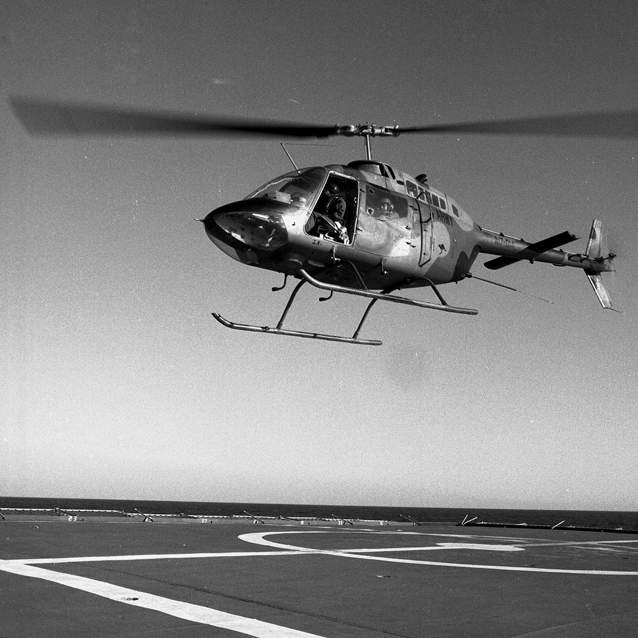
Photo: © Commonwealth of Australia
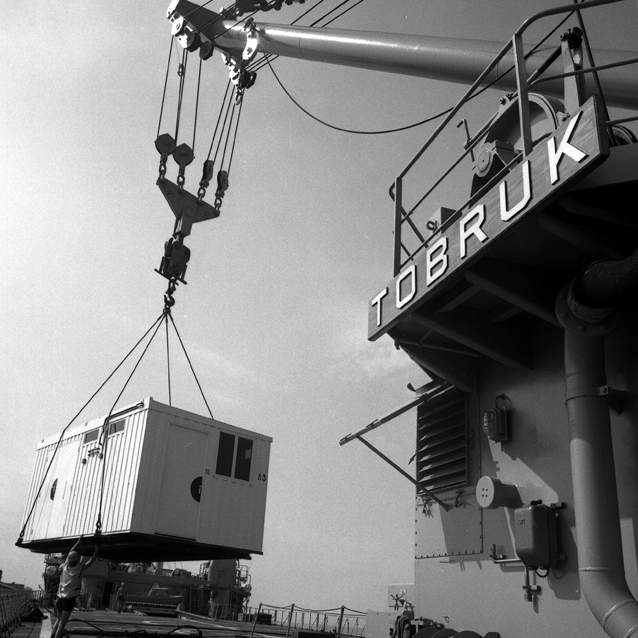
Photo: © Commonwealth of Australia
Ex-HMAS Tobruk could transport up to 18 tanks in the tank deck, and could provide accommodation for up to 520 troops.
These stories tell the important role that ex-HMAS Tobruk played during her service as a heavy lift ship, as well as the bravery and endurance shown by the service personnel who worked on her.
John was an engineer on ex-HMAS Tobruk when she was first commissioned in 1981. He participated in her first international visit to Israel with UN peacekeeping efforts.
Luke served on the ship from 1991 to 1993 conducting general duties. He participated in many exercises during his service, of particular significance his participation in Operation Solace, providing peace keeping efforts in Somalia at the end of 1992.
Wayne spent time on ex-HMAS Tobruk while working for
1-RAR. He remembers weeks spent on board ex-HMAS Tobruk, conducting training exercises as part of the military.
In the following letter, Stephen Jones writes about his time spent on ex-HMAS Tobruk during its first overseas deployment to Ashdod, Israel.
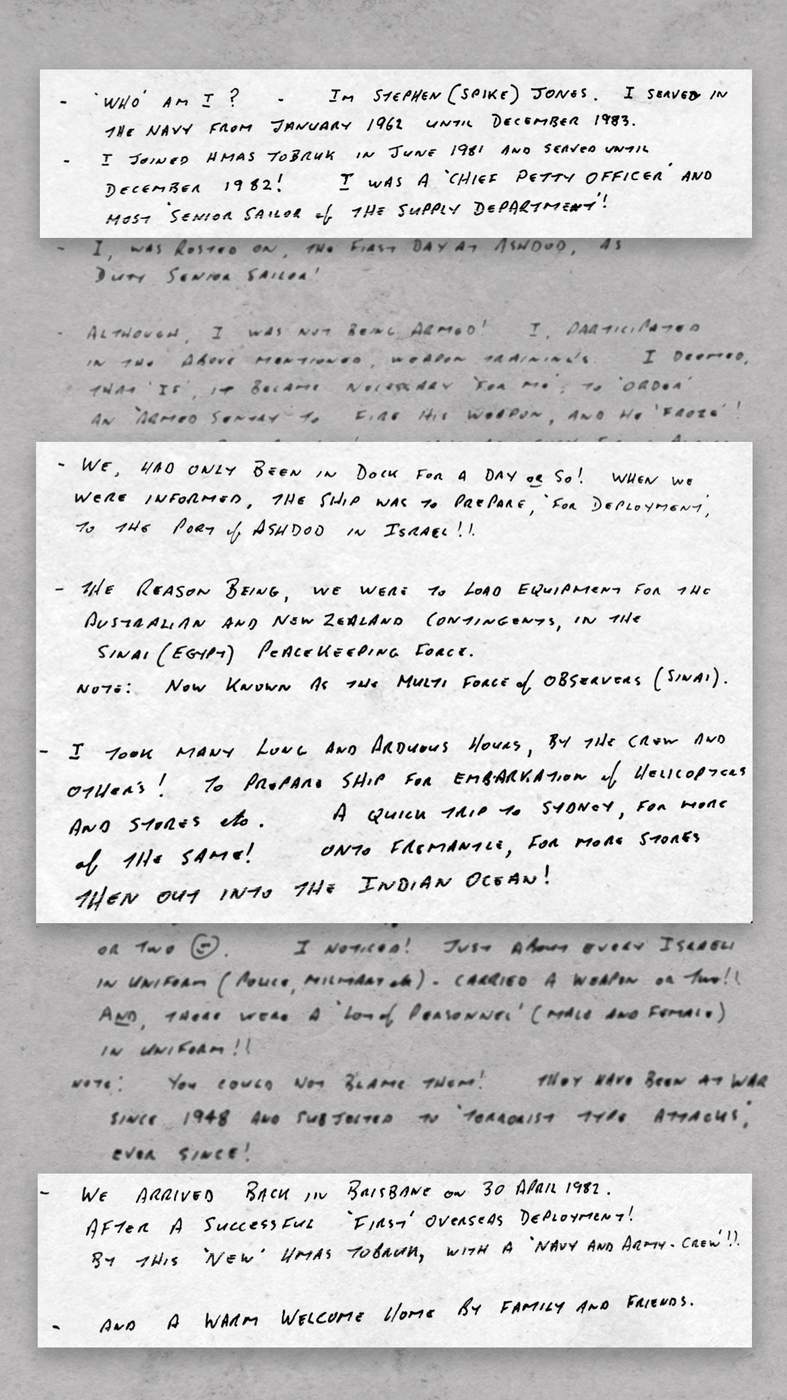
Over 400 tonnes of material was removed from the ship before she was scuttled.
Ex-HMAS Tobruk was towed to Bundaberg in December 2016 to begin preparations for scuttling. From here the ship was prepared to ensure that any materials harmful to the environment were removed, and that the ship is safe for divers.
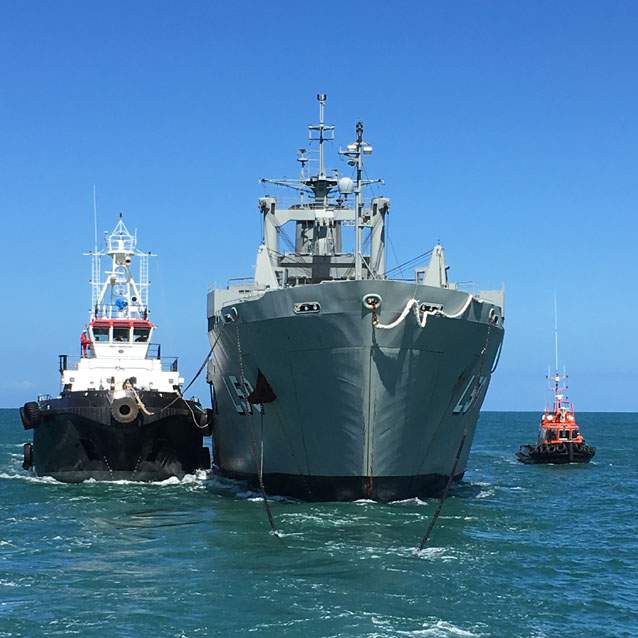
Photo: © Queensland Government
Cleaning operations included the removal of fuels, oils, greases, hazardous material, and items that could break loose during the scuttling process.
Diver access holes were cut to allow safe, easy access for divers, and allow light into the lower decks.
The Department consulted with the community and speciality groups to get their input into the dive design.
The ship was scuttled on 29 June 2018 in 28.5 metres of water, 22Nm from Burnett Heads and 25Nm from Hervey Bay in Great Sandy Marine Park.
The ship landed on its starboard side. Independent appraisals were conducted to consider righting (parbuckling) the ship and leaving it in place. Extreme risks, lengthy time delays and high costs meant that leaving the ship on her side was the best option.
The dive design of the ship was reconfigured which included cutting additional holes in the port (upper) side of the ship, closing a few compartments due to safety concerns and securing large items.
Reef residents
The warm waters of Harvey Bay have seen a rapid colonisation of the wreck. The wreck is already home to molluscs, corals, demersal and pelagic fish species, turtles, rays, sharks and is expected to be visited by migrating whales.
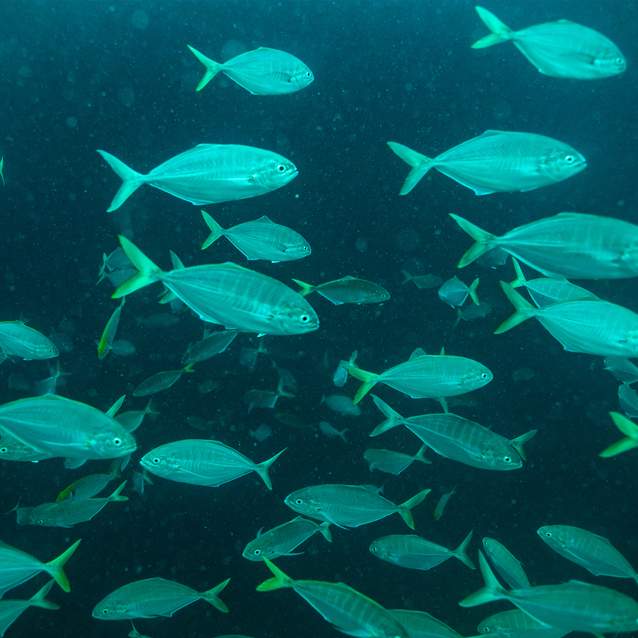
Photo: © Queensland Government
Book a dive
To book a dive on ex-HMAS Tobruk visit Fraser Coast Tourism and Events for tours leaving Hervey Bay or visit Bundaberg Region Tourism for tours leaving Bundaberg. Bookings can be made from either of these websites for divers on a private vessel.
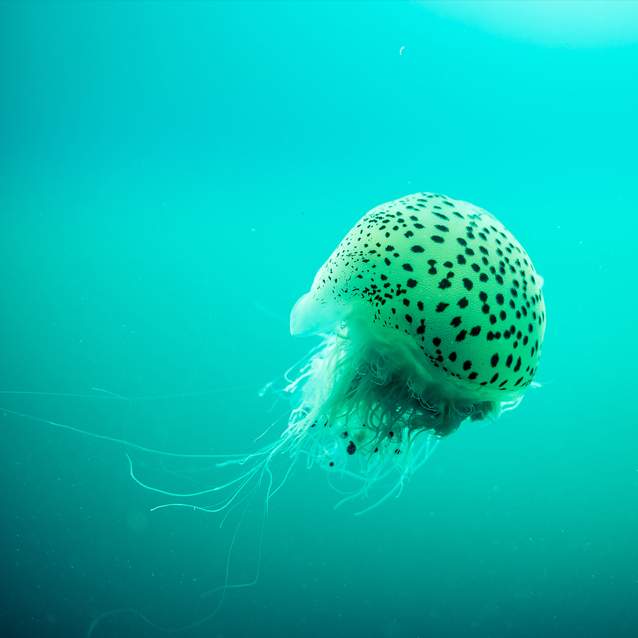
Photo: © Queensland Government
The ex-HMAS Tobruk site is a restricted access area (PDF, 313KB). Entry to the area is prohibited without a permit or written approval. This applies to everyone—all vessels, divers and snorkelers.
We invite you to share your experience of the wreck on our facebook page.
Access the text version of the stages from wreck to reef, and Steven Jones' letter of his time spent on the ex-HMAS Tobruk.

